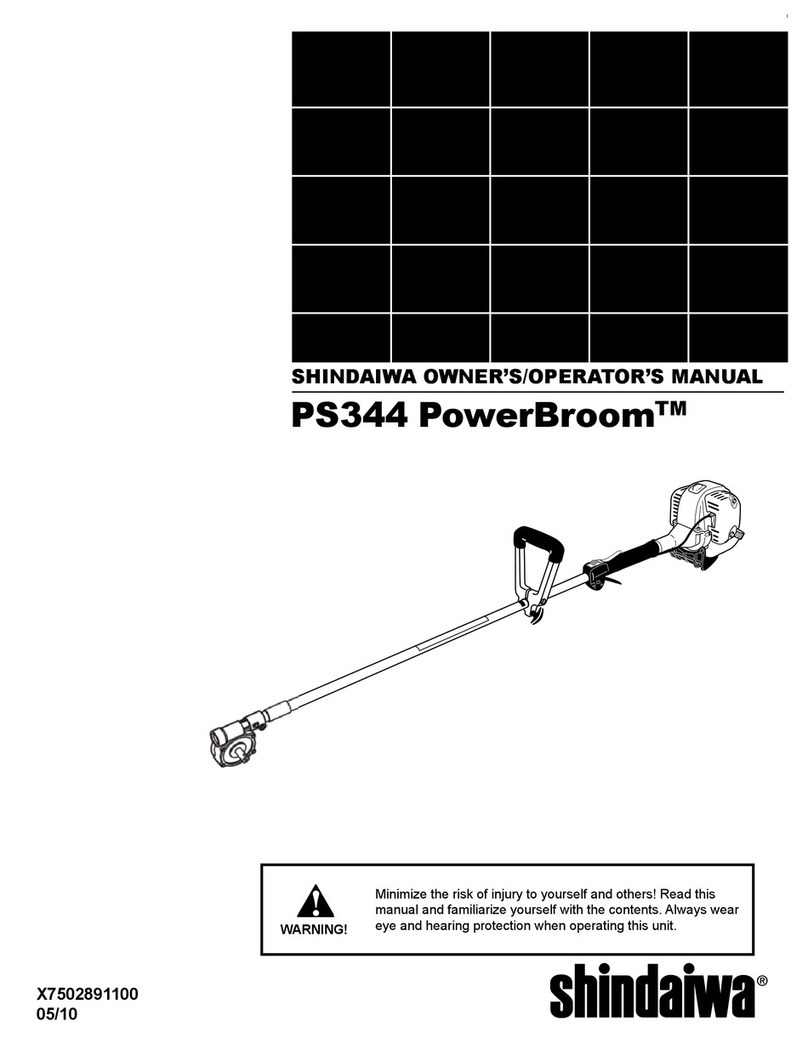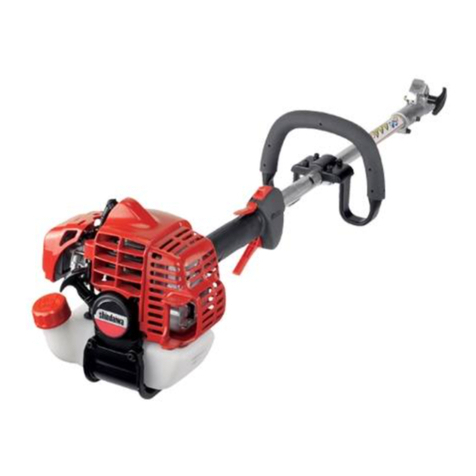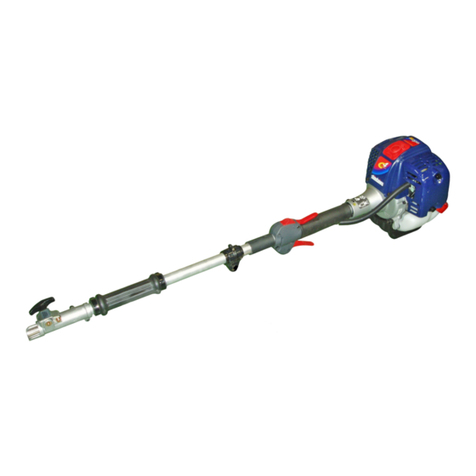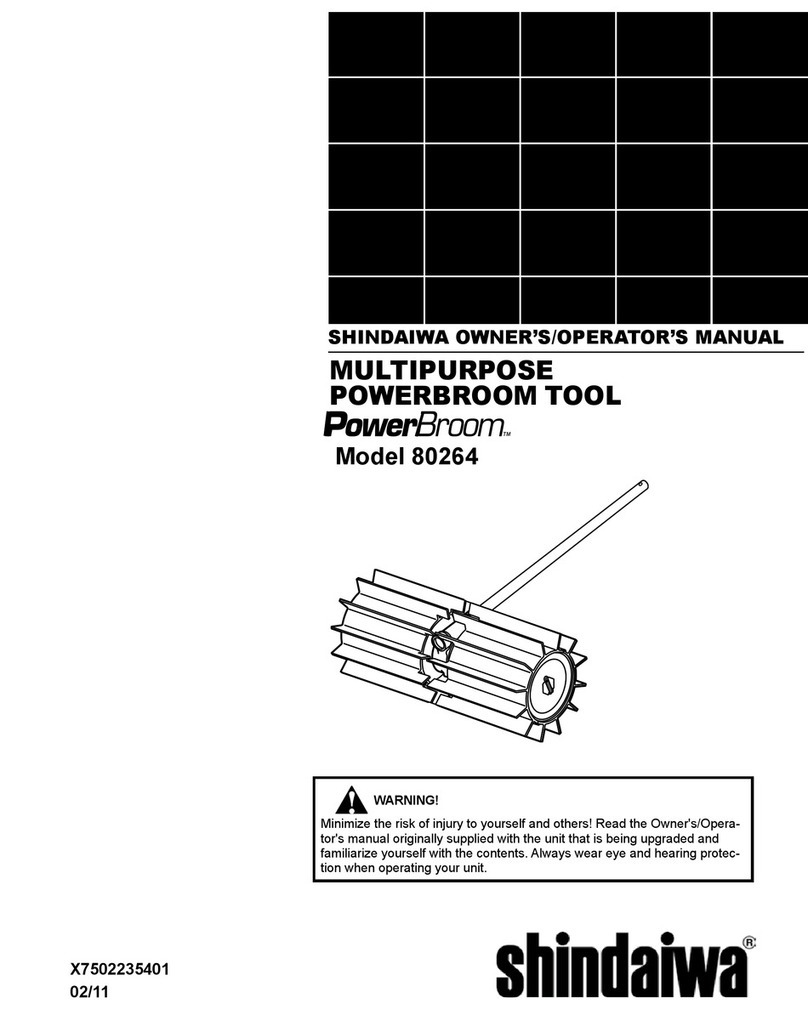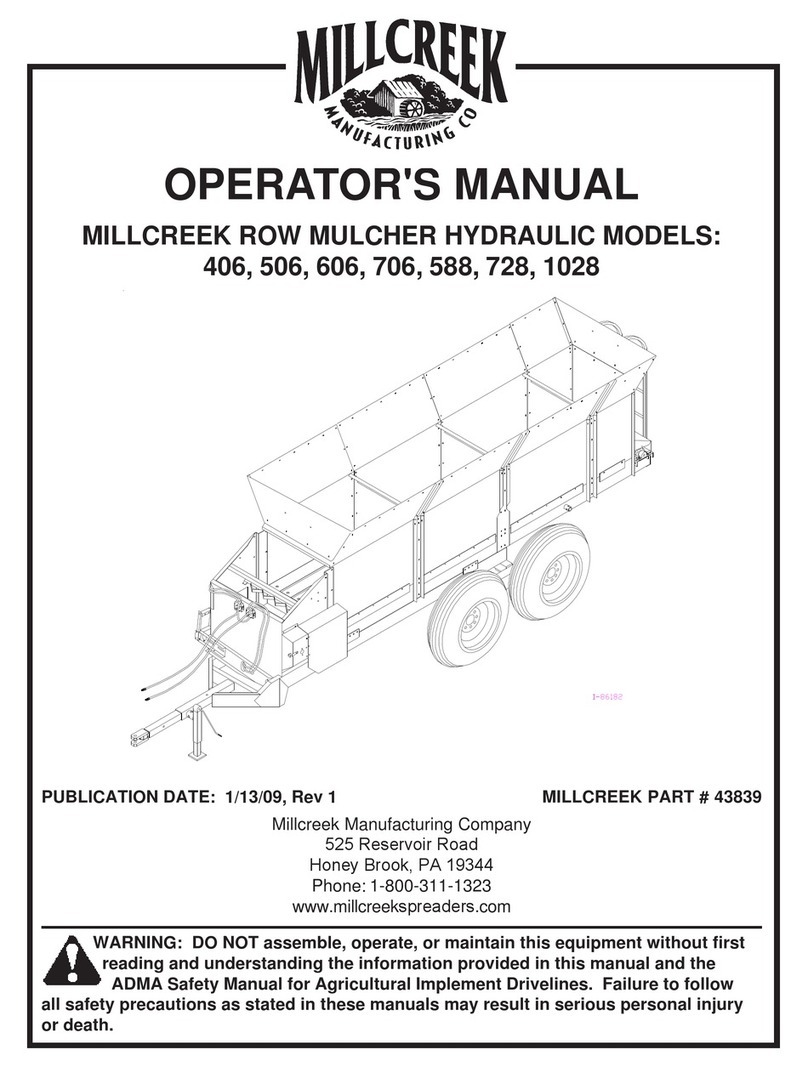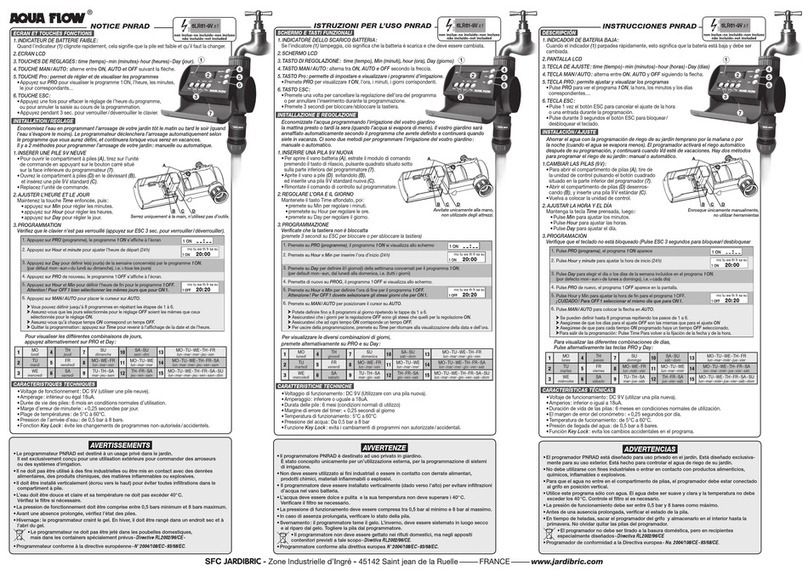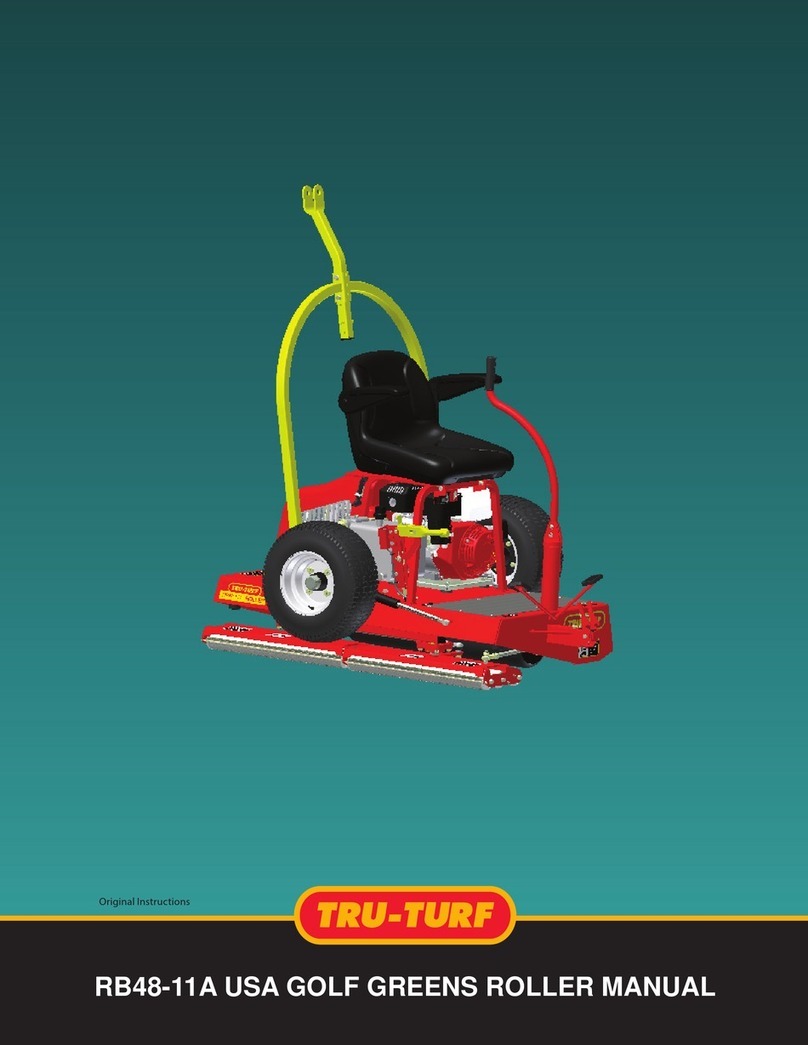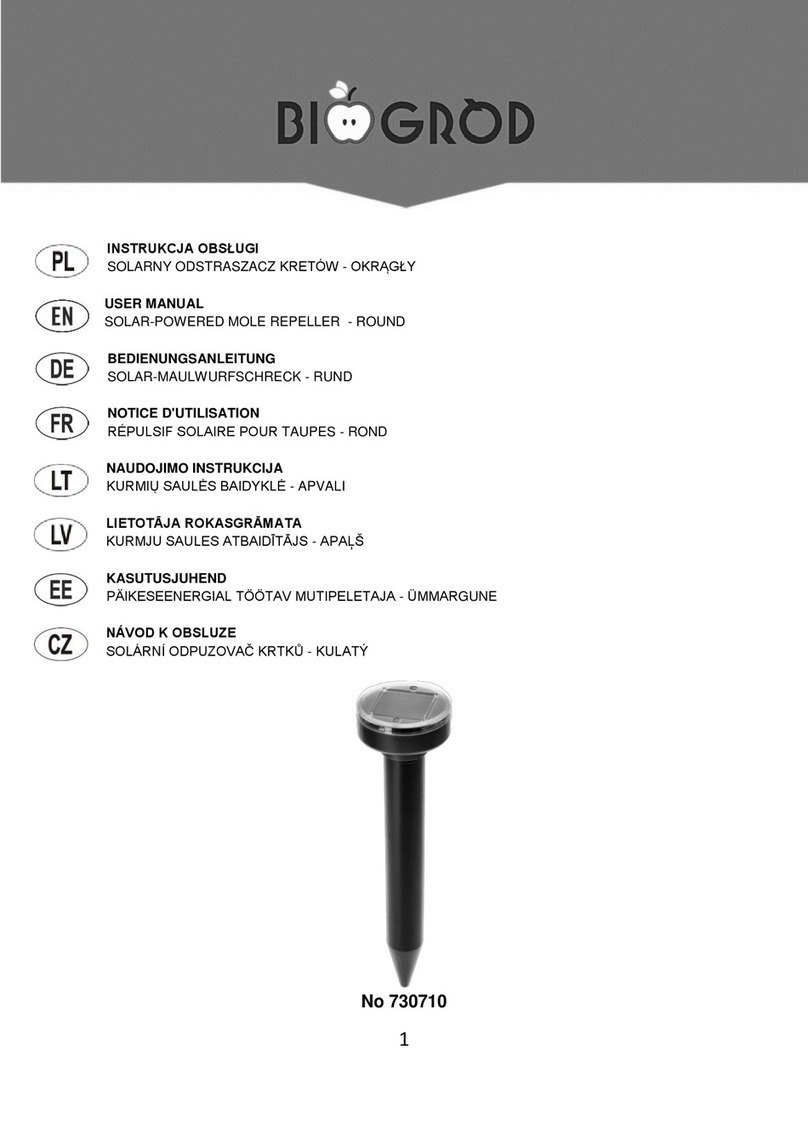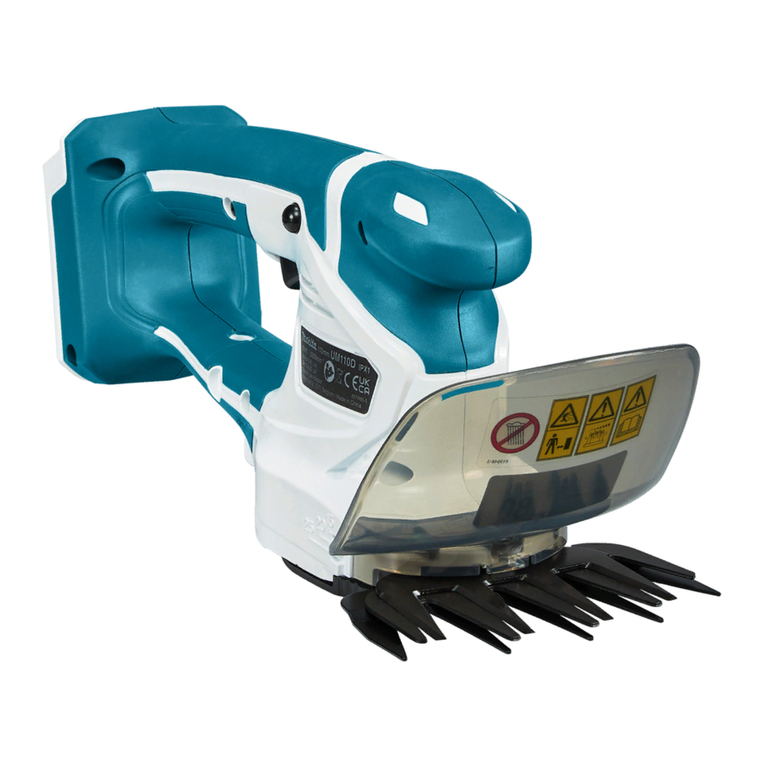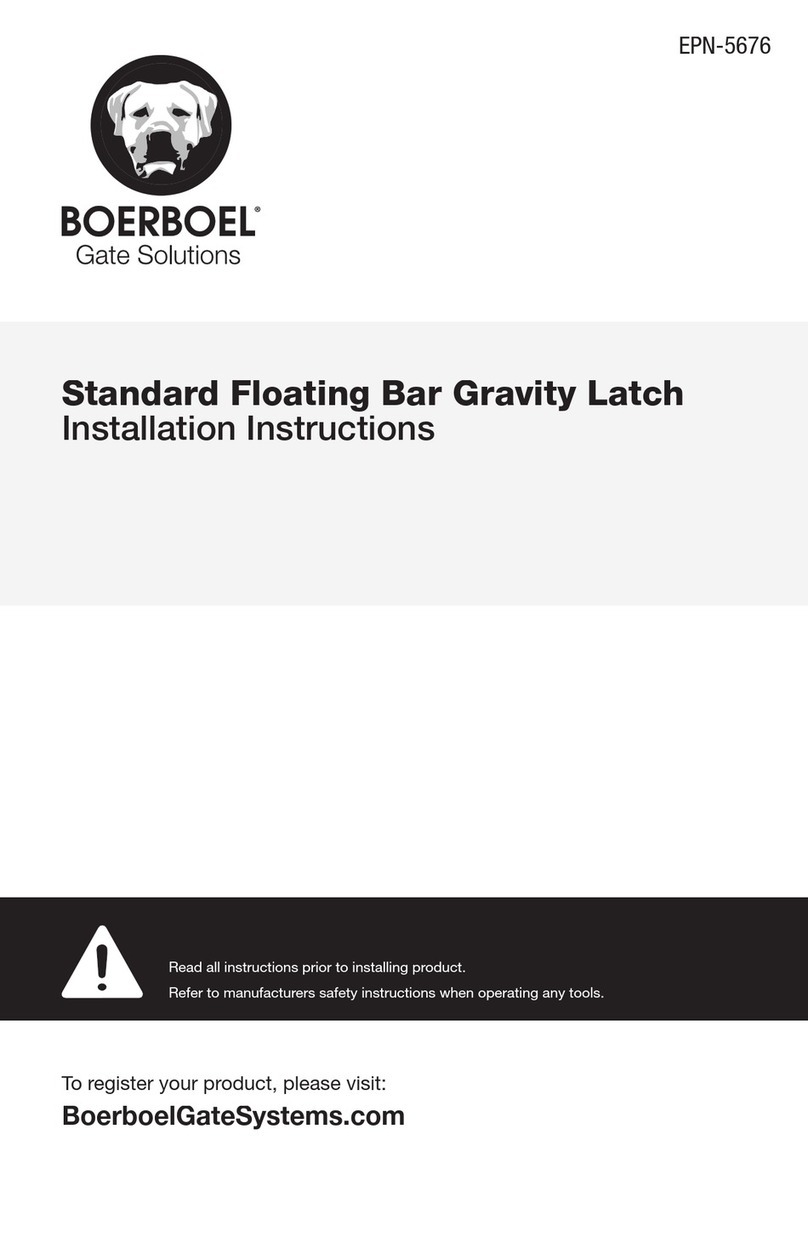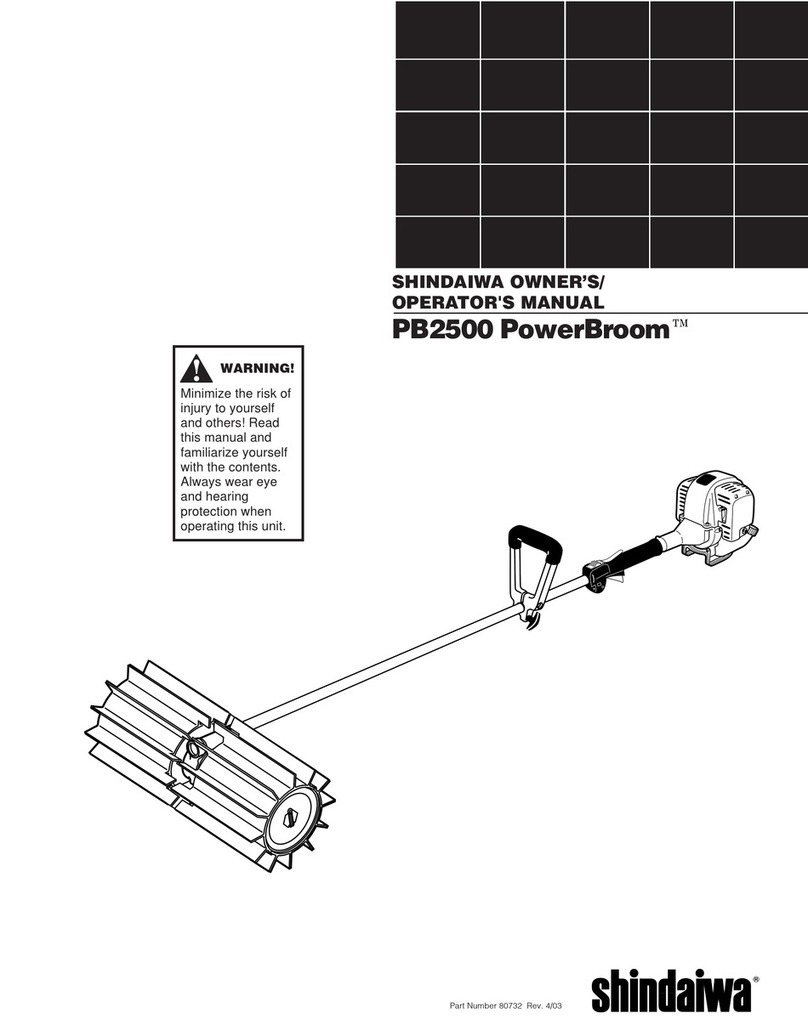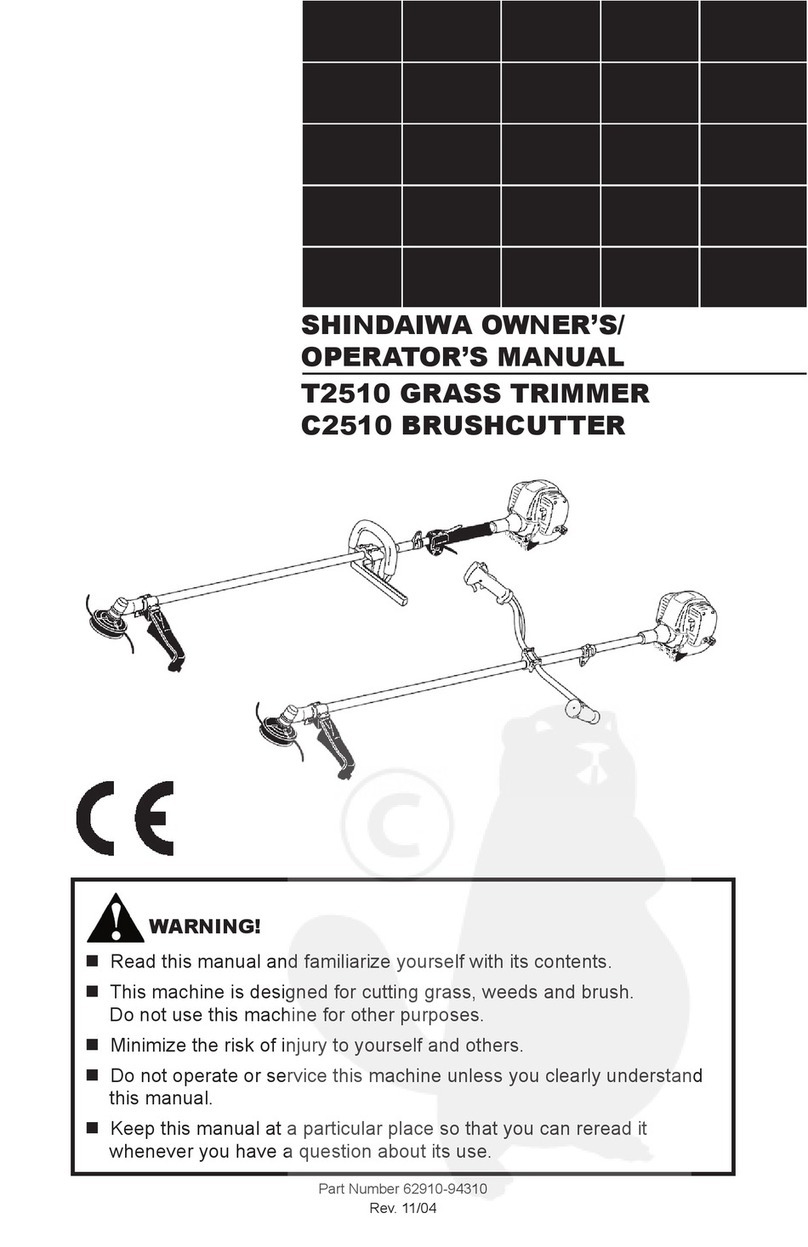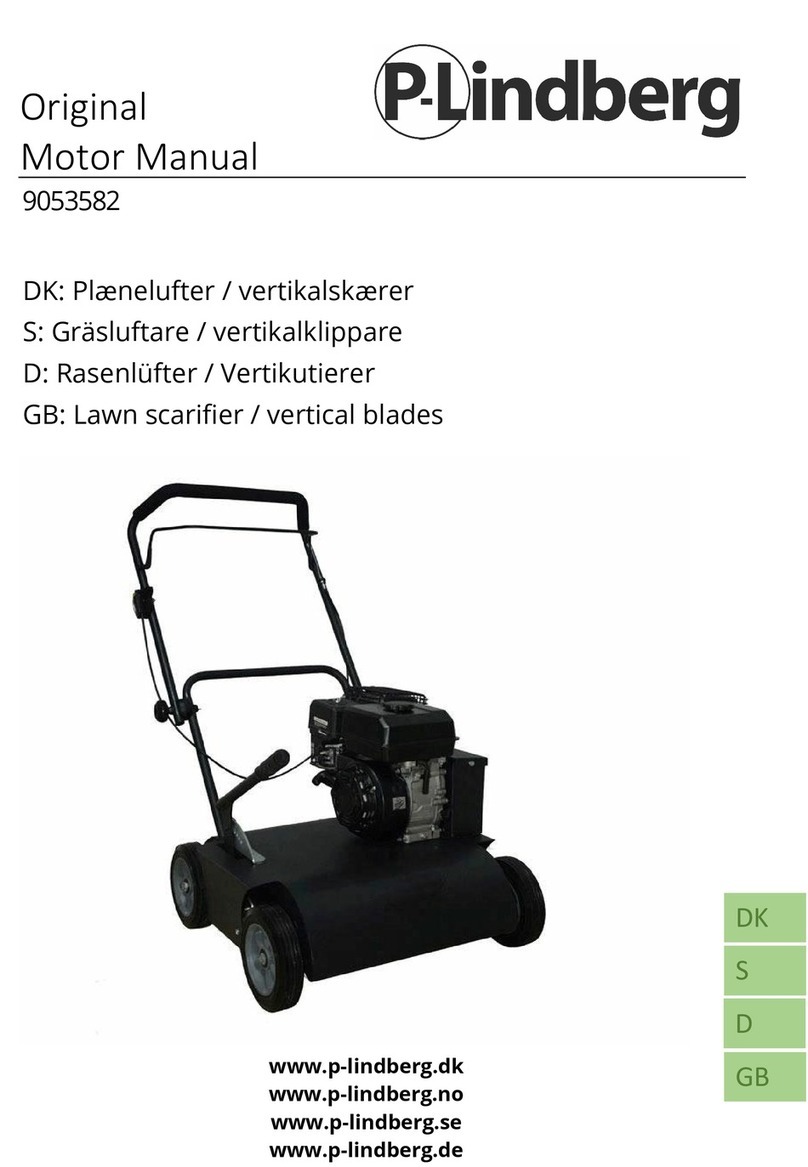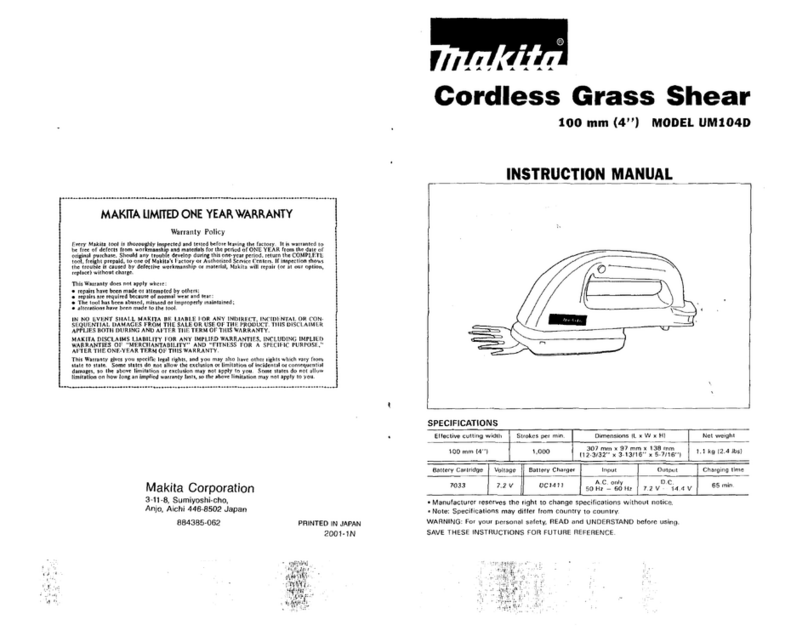3
Be aware of the danger of falling
debris.
This product conducts electricity.
Keep the product and/or operator
a minimum distance of 15 feet
(4.5 meters) away from electrical
sources and power lines.
Keep bystanders at least 50
feet (15 meters) away from the
operating unit to reduce the risk
of being struck by falling objects
or thrown debris.
The blades / cutting attachments
are SHARP! Handle with care.
Safety
Work Safely
Attachments for this unit operate at
very high speeds and can do serious
damage or injury if they are misused
or abused. Never allow a person without
training or instruction to operate this
unit!
Stay Alert
You must be physically and mentally fit
to operate this unit safely.
WARNING!
Never make unauthorized
attachment installations.
WARNING!
Never operate
power equipment of any
kind if you are tired or if
you are under the inuence of alco-
hol, drugs, medication or any other
substance that could affect your
ability or judgement.
WARNING!
Use Good Judgment
ALWAYS wear eye protection to
shield against thrown objects.
ALWAYS wear hearing protection
devices when operating this unit. Pro-
longed exposure to excessive noise
is fatiguing and could lead to impaired
hearing. The use of proper ear protec-
tion can reduce this potential hazard
NEVER operate the engine when trans-
porting the unit. Make sure cutter safety
guards are in place when transporting
this unit.
NEVER operate the engine indoors!
Make sure there is always good ven-
tilation. Fumes from engine exhaust
can cause serious injury or death.
ALWAYS make sure there are no
missing or loose fasteners and that
the stop switch and throttle controls
are working properly.
ALWAYS use the proper cutting tool
for the job.
ALWAYS clear your work area of
trash or hidden debris that could
be thrown back at you or toward a
bystander.
ALWAYS make sure the cutting
attachment tool is properly installed
and rmly tightened before operation.
NEVER use a cracked or warped
cutting attachment: replace it with a
serviceable one and make sure it ts
properly.
ALWAYS stop the engine immedi-
ately if it suddenly begins to vibrate
or shake. Inspect for broken, miss-
ing or improperly installed parts or
attachments.
ALWAYS keep the unit as clean as
practical. Keep it free of loose vegeta-
tion, mud, etc.
ALWAYS hold the unit rmly with both
hands when cutting or trimming, and
maintain control at all times.
ALWAYS keep the handles clean.
ALWAYS disconnect the spark plug
wire before performing any mainte-
nance work.
Before starting the engine make sure
the cutting attachment is not contact-
ing anything.
ALWAYS stop the engine immedi-
ately and check for damage if you
strike a foreign object or if the unit
becomes tangled. Do not operate
with broken or damaged equipment.
ALWAYS maintain the Multipurpose
Engine according to this owner’s
manual and follow the recom-
mended scheduled maintenance.
NEVER allow the engine to run at
high RPM without a load. Doing so
could damage the engine.
ALWAYS use genuine Shindaiwa
parts and accessories when repair-
ing or maintaining this unit.
NEVER modify or disable any of the
unit’s devices. Use only Shindaiwa
genuine parts for repairs and
maintenance.
WHEN transporting the unit in a
vehicle, tie it down securely to pre-
vent damage and fuel spillage.
NEVER permit a person without
training or instruction to repair or
operate this machine.
WARNING!
The ignition components of this machine generate an electromagnetic eld during operation which may interfere
with some pacemakers. To reduce the risk of serious or fatal injury, persons with pacemakers should consult with their
physician and the pacemaker manufacturer before operating this machine. In the absence of such information, ECHO
does not recommend the use of ECHO products by anyone who has a pacemaker.

